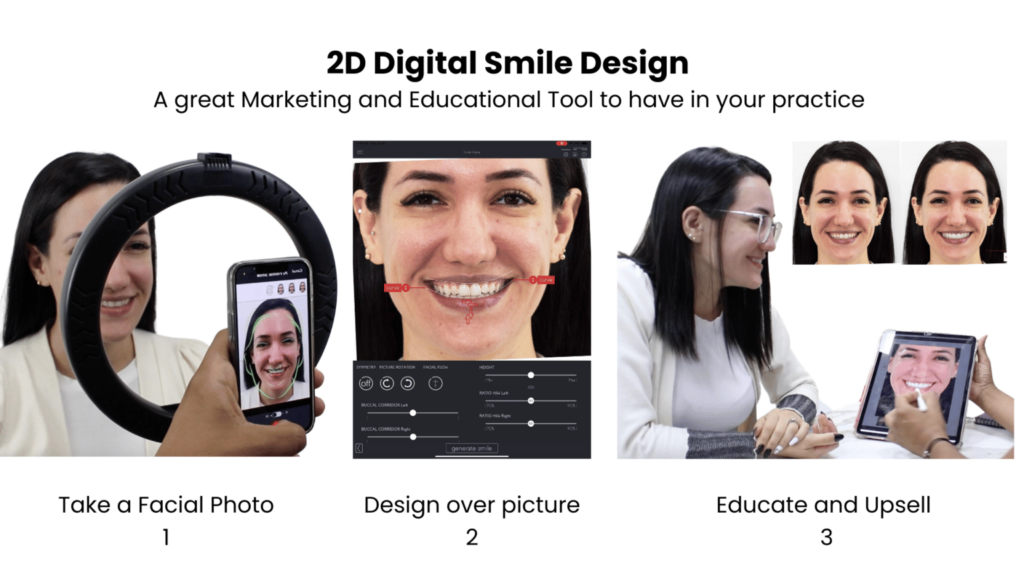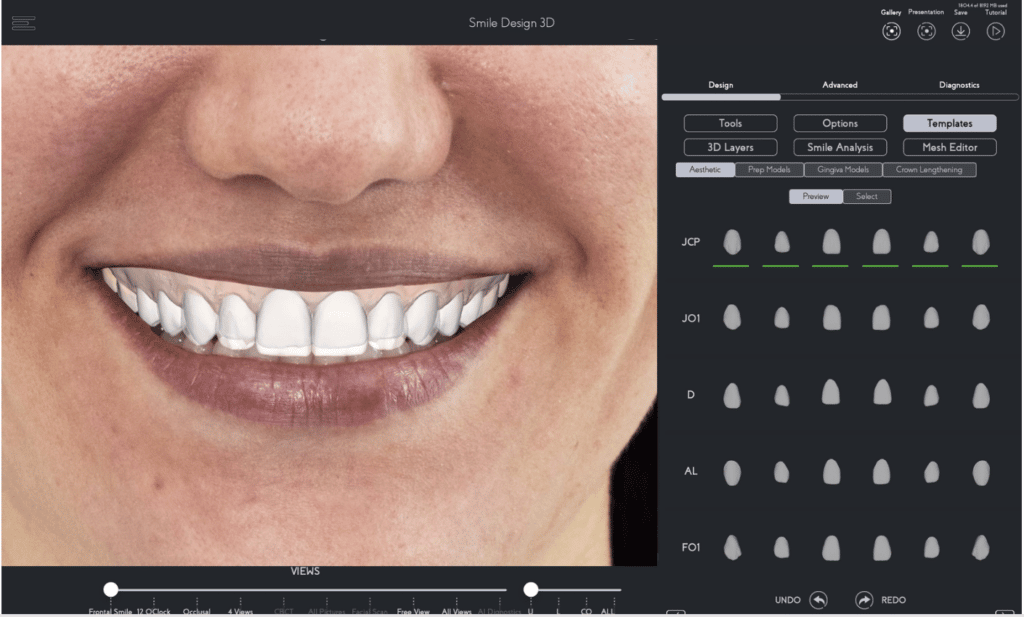Evolution of Smile Design Technology
Over the past two decades, the concept of Smile Design has transitioned from traditional analog methods to sophisticated digital approaches, evolving from two-dimensional (2D) formats to three-dimensional (3D) models. This progress has been significantly influenced by contributions from dental professionals globally, including renowned figures such as Michel Magne, Livio Yoshinaga, Jan Haito, Paulo Kano, Christian Coachman, and Alan Method.
Traditional 2D Smile Design and Its Limitations

Historically, 2D Smile Design has involved overlaying a smile framework onto a patient’s photograph, adhering to mathematical guidelines such as the Golden Proportion and the Recurrent Esthetic Dental (RED) proportion. This method, while foundational, presents several limitations:
- Limited Perspective: The 2D design primarily offers a frontal view of the smile, based solely on the front surfaces of the teeth, without providing a comprehensive view of each tooth’s width.
- Inaccurate Proportions: Adjustments in the 2D outline can lead to distortions, particularly when stretching to fit different dental arch shapes like oval, square, or circular, which can misrepresent the tooth’s actual appearance from the front.
- Inadequate Coverage: The 2D outline often fails to accommodate the entire buccal surface of the teeth, particularly the canines, premolars, and molars.
- Arch Discrepancies: The 2D Smile Design does not account for the curvature of the patient’s upper arch from an occlusal viewpoint, which can lead to inaccuracies when transitioning to a 3D digital mockup, especially affecting the posterior teeth.
Benefits of 2D Digital Smile Design

Despite these limitations, 2D Digital Smile Design holds value in several areas:
- Educational Tool: It serves as an introductory visual aid during initial consultations, helping patients understand potential outcomes.
- Marketing Strategy: It is an effective promotional tool for dental practices, showcasing possible results.
- Preliminary Drafting: It offers a basic draft of the treatment plan, aiding in patient communication and expectation management.
Transition to 3D Digital Smile Design

To overcome the limitations of 2D modeling, the next generation of Digital Smile Design emphasizes a shift towards a 3D environment. This approach enables:
- Enhanced Realism: 3D digital mockups provide more realistic and accurate representations of the final dental restoration.
- Efficient Collaboration: It facilitates better coordination among dental technicians and dentists, improving the outcome of final restorations.
- Streamlined Processes: The adoption of digital tools reduces the steps involved in smile design, enhancing efficiency.
Integration of SmileFy in Modern Dental Practices

SmileFy represents a leap in digital dental technology, offering tools that enhance patient engagement through realistic simulations and 3D digital mockups. The software utilizes comprehensive dental and facial analytics to design smiles that are harmoniously aligned with each patient’s unique features. Available on platforms like the AppStore, SmileFy provides access to a library of natural 3D teeth templates that can be adapted into temporary and final restorations, promoting a seamless integration into any dental practice’s workflow.
Conclusion
While 2D Digital Smile Design has its limitations, it remains a valuable tool for patient education and practice marketing. However, transitioning to 3D models through platforms like SmileFy can significantly enhance the accuracy, predictability, and aesthetic outcomes of dental treatments, solidifying the role of digital innovation in contemporary dental practices.

